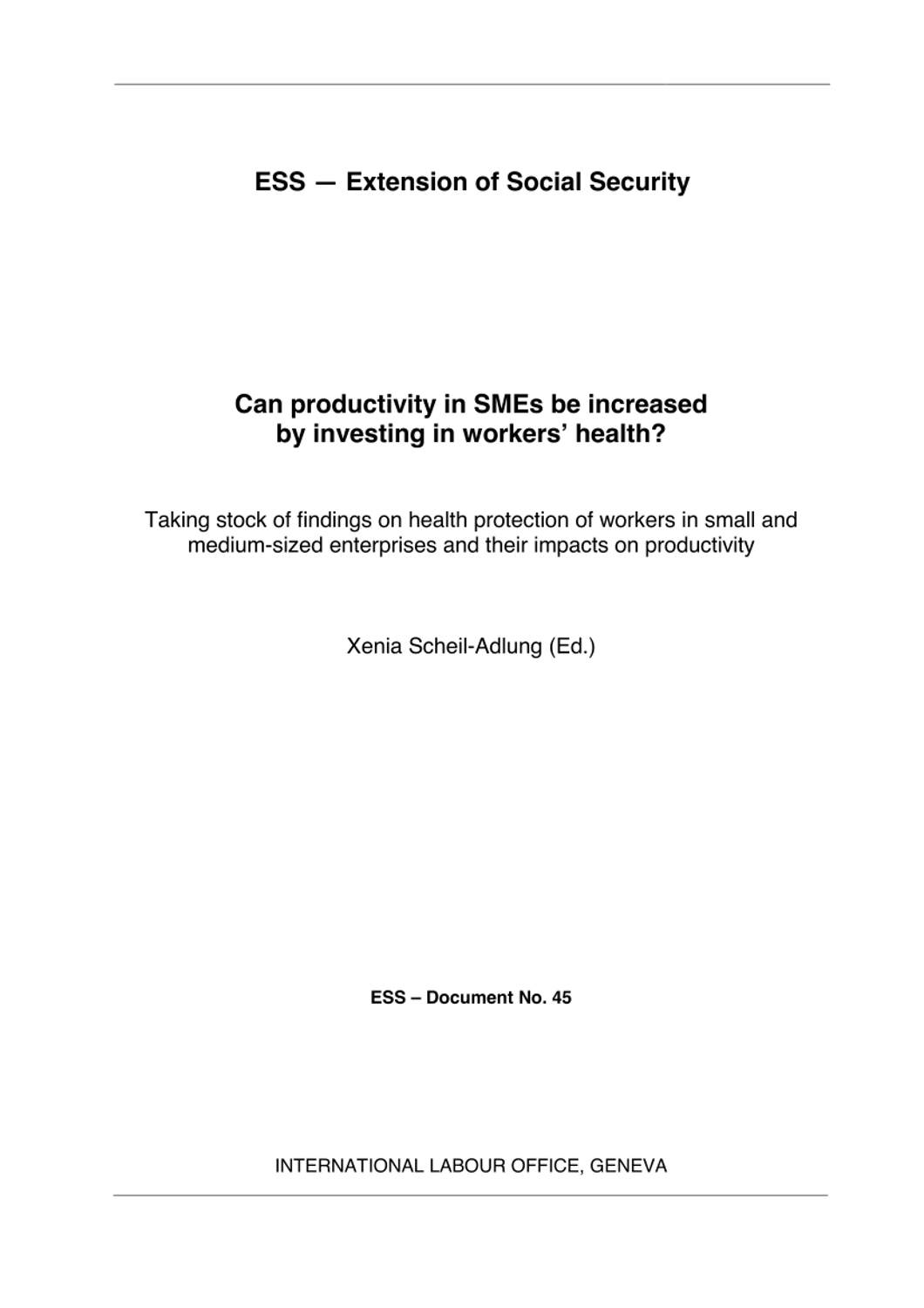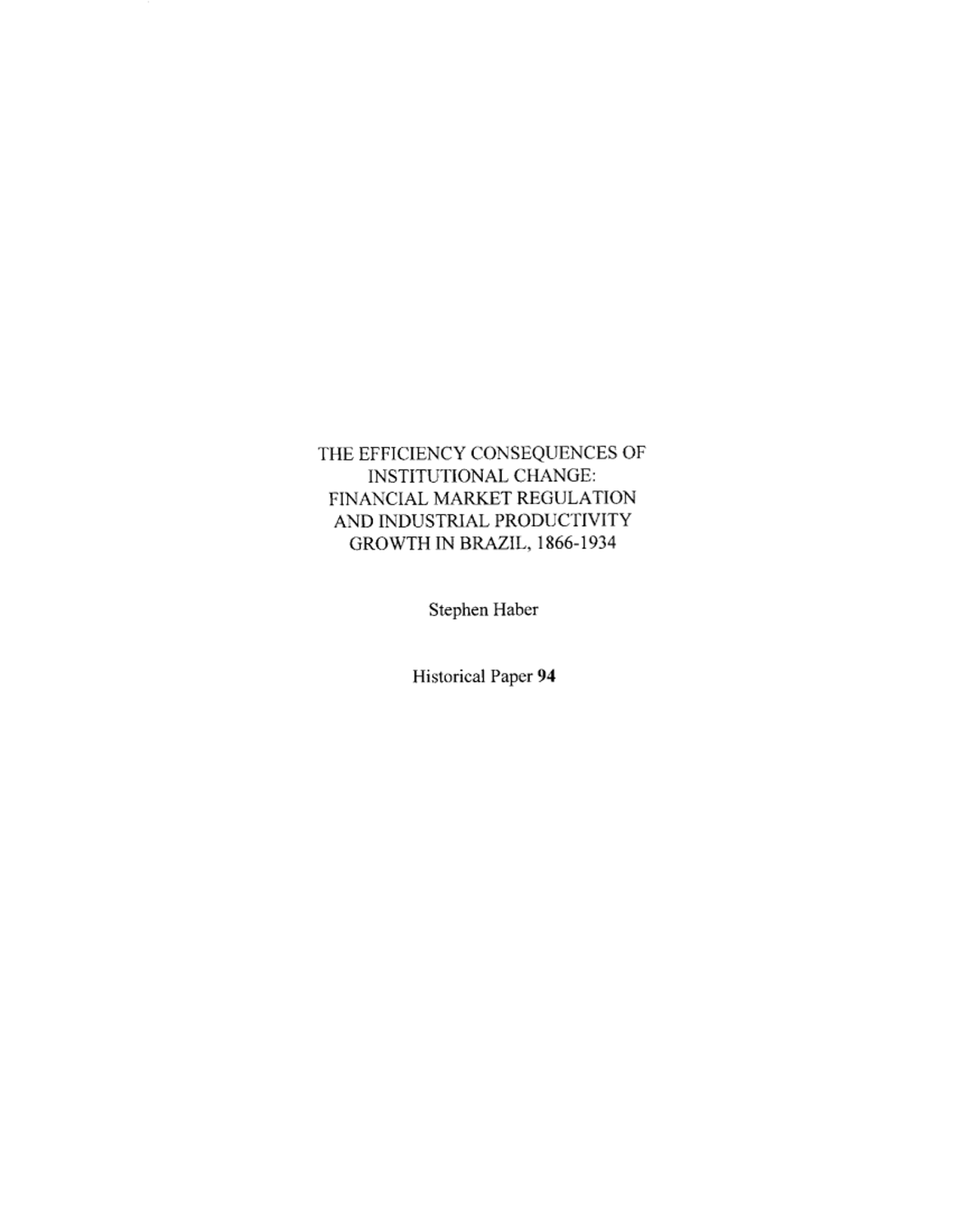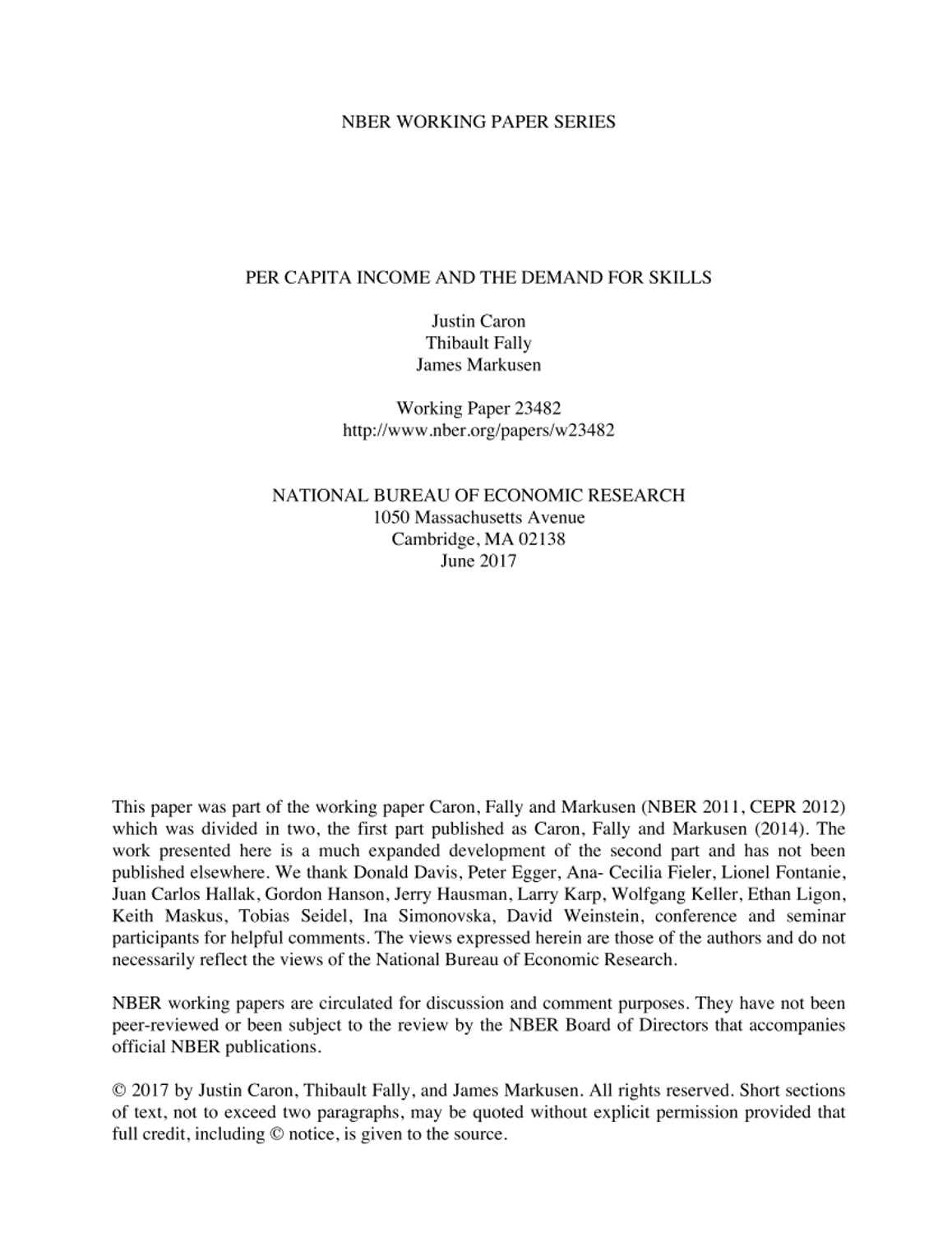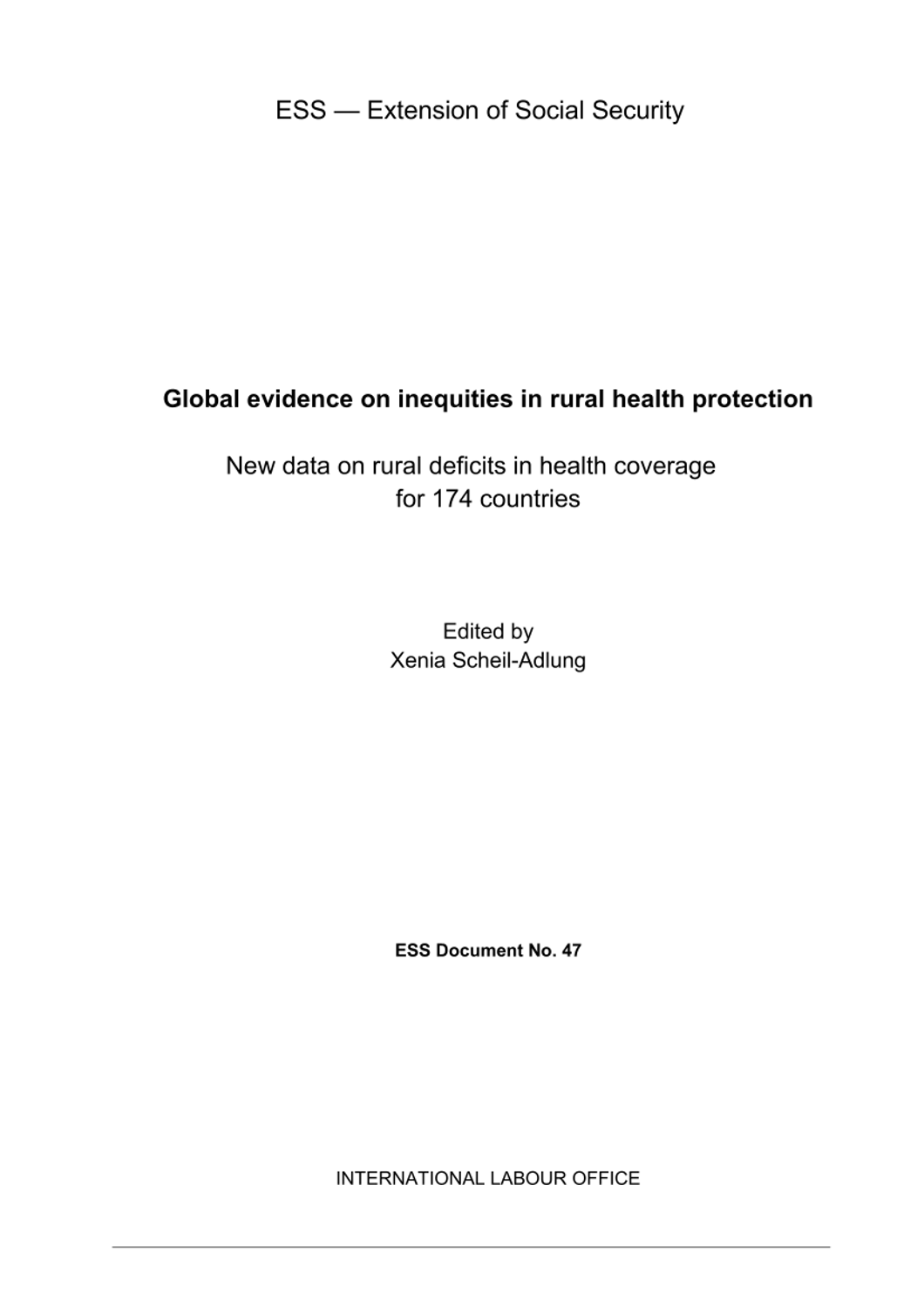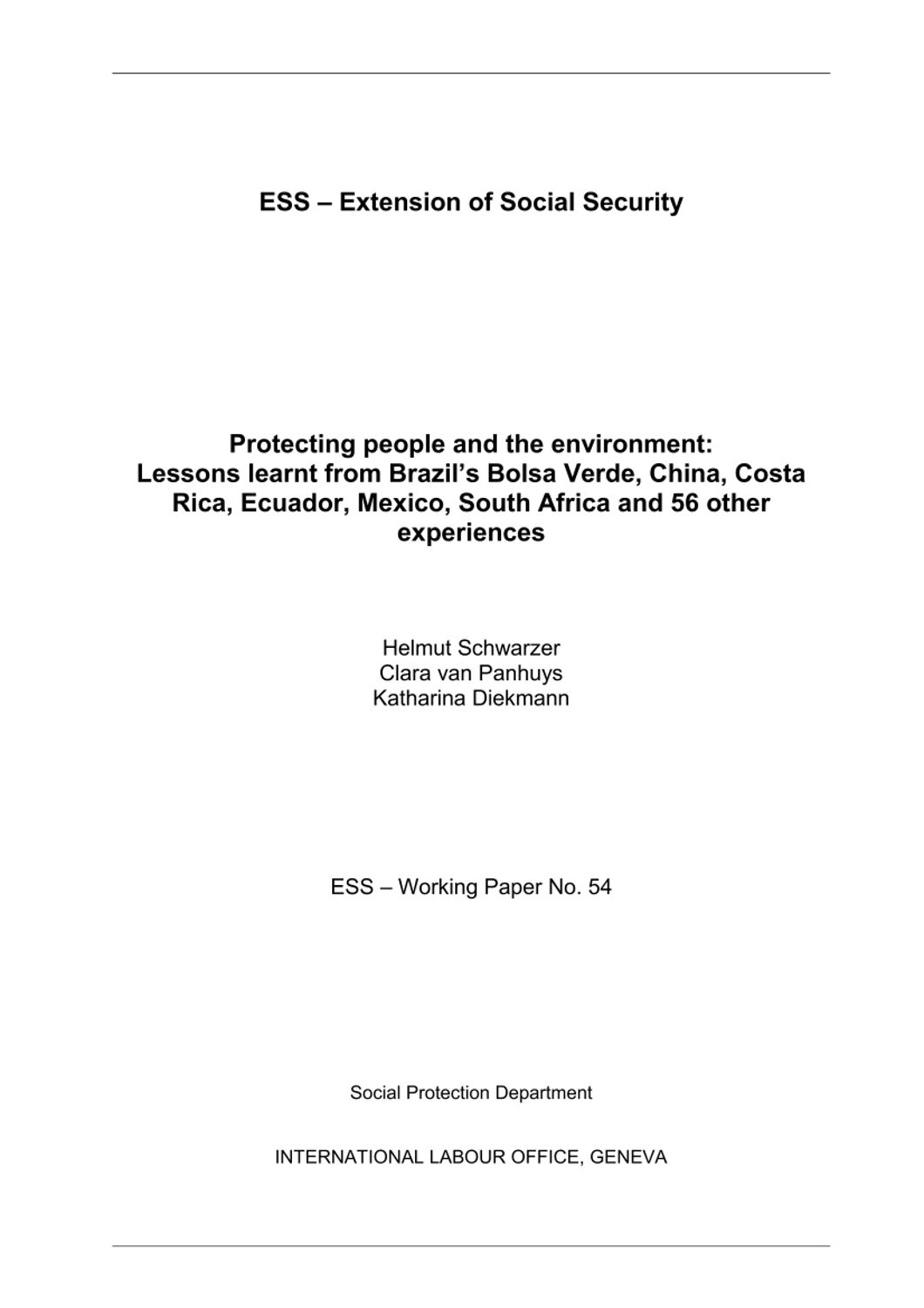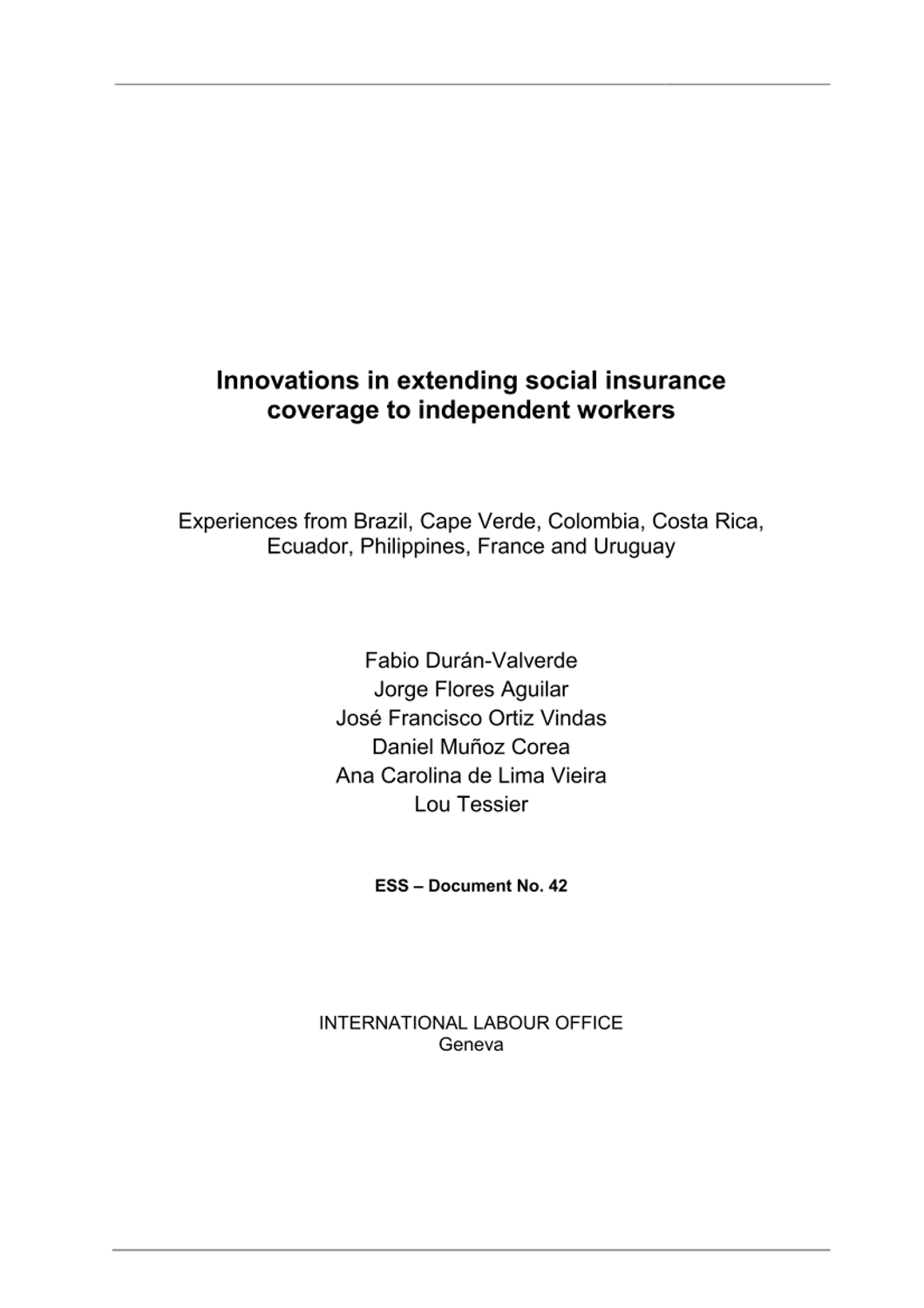연구보고서Extension of Social Security 45
Can productivity in SMEs be increased by investing in workers' health?: taking stock of findings on health protection of workers in small and medium-sized enterprises and their impacts on productivity
- 청구기호
- ESS 45
- 발행사항
- Geneva : ILO, 2014
- 형태사항
- 82 p. :. PDF file ;. 867 KB
- 키워드
- Social protection, Productivity, Working conditions, Small enterprise, Informal economy, Role of ILO, Developed countries, Developing countries
- 바로가기
소장정보
| 위치 | 등록번호 | 청구기호 / 출력 | 상태 | 반납예정일 |
|---|---|---|---|---|
이용 가능 (1) | ||||
| E0002742 | 대출가능 | - | ||
이용 가능 (1)
- 등록번호
- E0002742
- 상태/반납예정일
- 대출가능
- -
- 위치/청구기호(출력)
목차
Foreword ... iii
Executive summary ... vii
Abbreviations and acronyms ... xi
1. Introduction ... 1
1.1. Background and objectives ... 1
1.2. Definitions and available statistical material ... 2
2. Methods ... 5
3. Theoretical framework: Social protection, working conditions, productivity and social
impact ... 7
3.1. Social protection ... 7
3.2. Working conditions ... 7
3.3. Productivity ... 8
3.4. Linking social protection, working conditions and productivity ... 9
3.5. Economic impact of pro-SME policies ... 11
4. Social protection in SMEs: Obligations and barriers to effective access ... 13
4.1. Policies and coverage ... 13
4.2. Employer obligations ... 15
4.3. Barriers to effective access ... 17
4.4. Specific challenges for small enterprises in the informal economy ... 17
5. Impacts of social protection and working conditions in SMEs ... 20
5.1. Gaps in social protection: Impacts on workers and their families ... 20
5.2. Occupational safety and health ... 21
6. Effects of social protection on productivity in SMEs ... 23
6.1. Measurement of productivity impacts ... 23
6.2. Empirical findings ... 26
7. Social protection and SMEs at a glance in selected countries ... 29
7.1. An overview ... 29
7.2. Case study on India: Social protection in health of workers in SMEs ... 33
8. Recommendations and policy advice to address current deficits ... 49
8.1. Theoretical and practical challenges ... 49
8.2. Addressing research gaps ... 50
8.3. Providing a supportive business environment ... 51
8.4. Specific suggestions for organizations and institutions ... 52
9. Conclusion ... 54
Bibliography ... 57

